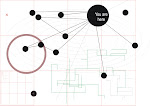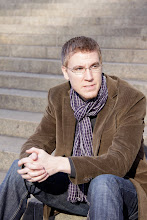 Of my studies in place, sacred space is one of my primary interests. During my short time in Cyprus I have passed through a series of mosques, basilica ruins, churches and monasteries. I have visited these places, photographed them from a variety of angles and purposes, and yet, have I really entered them?
Of my studies in place, sacred space is one of my primary interests. During my short time in Cyprus I have passed through a series of mosques, basilica ruins, churches and monasteries. I have visited these places, photographed them from a variety of angles and purposes, and yet, have I really entered them?I wrote earlier this week of Belden Lane’s text Landscapes of the Sacred, in which he makes a fine delineation between Plato and Aristotle’s conceptions of place. Earlier Lane uses a 4 fold typology with which he interprets sacred space: 1) sacred space is not chosen, it chooses, 2) sacred space is ordinary place, ritually made extraordinary, 3) sacred place can be tread upon without being entered, 4) the impulse of sacred place is both centripetal and centrifugal, local and universal.

As the week has gone along, Lane’s third axiom, “Sacred place can be tread upon without being entered” stuck out. Was I merely treading upon these sites without entering into them? What does it mean to existentially enter such a site? W. Paul Jones in his wonderful work A Table in the Desert: Making Space Holy suggests there is a profound difference between “secular and sacred memory” where he contrasts tourist attractions with sites of holy pilgrimage. This reflects my own experience of St. Patrick’s Cathedral in New York City. It was only upon my 3rd visit did my heart and mind make that liminal journey from touring art student who appreciated the architecture to a pilgrim seeking to understand the O/other in that place.
Lane suggests that our bodily presence in a particular place is never identical to being open to the fullness of time and place. Heidegger, the modern philosopher suggested with his concept of “dassein,” which translates from German to mean “being” or more accurately “being there,” connotes the idea of dwelling deeply in a place as to unite the 4 horizons of being human: earth, sky, gods, and men. And yet, we often live in that paradox of occupying a place without entering into that place. In essence, we tread upon, without entering in…the literal threshold ceases to become an existential one.

It is interesting that our projects involve work on, or near, an early Christian basilica. While we are not working directly within the nave or apse, we are working to understand the remnants of a side room that has toppled with considerable force. As we work to uncover mortar that once held the walls and floors together, are we merely treading upon this once sacred space? Has anyone, through the course of their work passed through the literal to that existential threshold to a sacred space as the original site intended?
What does photography add to this mix?
Photography is so closely related to memory and yet is often hard to tease out. Two of the primary texts that students of photography read, Susan Sontag’s On Photography, and Roland Barthes Camera Lucida come down harshly on photography’s connection to memory. Barthes would suggest that photography actually stifles memory. Yi-Fu Tuan, the well known human geographer, alternatively suggests in his text Place and Art that photography and other art works become “virtual places” that viewers can return to over and over to rehearse memory and experience.
Perhaps that is why I love photographing place/space/landscape. These images provide me, and perhaps others, an opportunity to repeatedly return to places through a virtual pilgrimage. The images provoke the viewers memory and imagination that the liminal spaces may be entered into again without being physically present to the place.

One profound challenge to this theory I share with Tuan is the ubiquity of images in our consumer society. We consume images at an astounding rate and with the onset of the digital imagery we produce them at an even higher rate. Will the sheer volume of images negate the potential for a liminal entry into the image? Or, like the places themselves, do we need to learn to protect such images in the ways we “use” them? Is there a proper attitude with which we should attend to photography that would more readily facilitate or allow the slide from consumer or tourist of place to sacred place?
Just a few musings from a very full week.
Photos
1) Hala Sultan Tekke
2) Agios Lazaros
3) Apse of 5th C. Basilica at Kourion
4) Apse of early Basilica at Pyla-Koutospetria







